-
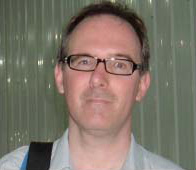
Stéphane Bélair
Stéphane Bélair received a Ph.D. degree from McGill University in Atmospheric and Oceanic Sciences in 1994. After post-doctoral studies in Meteo-France and in Environment Canada, Dr. Bélair joined ... moreStéphane Bélair received a Ph.D. degree from McGill University in Atmospheric and Oceanic Sciences in 1994. After post-doctoral studies in Meteo-France and in Environment Canada, Dr. Bélair joined the Meteorological Research Division of Environment Canada (EC/MRD) in 1997 as a research scientist. Since then, he has been focusing on improving the physical configuration of atmospheric models, including precipitation, clouds, boundary-layer turbulence, and surface processes. Dr. Bélair has been the scientific lead of several operational implementations of the short-range continental and medium-range global numerical weather prediction systems at the Meteorological Service of Canada. He is currently EC/MRD’s lead for land surface modeling and assimilation. Dr. Bélair is currently a member of the Mesoscale Weather Forecasting Working Group of the World Weather Research Program. In collaboration with the Canadian Space Agency, he is currently developing a Canadian Science and Applications Plan for the Soil Moisture Active and Passive (SMAP) mission.
In the spirit of scientific collaboration, SMAP International science team members are funded through their respective countries for their work on this project.
less -
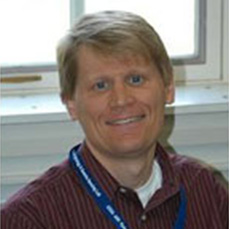
Wade Crow
Crow received his B.A. (Physics) in 1995 from Carleton College, Northfield, MN and his M.S.E. (Civil and Environmental Engineering) in 1998 from Princeton University, followed by his Ph.D. (Civil a... moreCrow received his B.A. (Physics) in 1995 from Carleton College, Northfield, MN and his M.S.E. (Civil and Environmental Engineering) in 1998 from Princeton University, followed by his Ph.D. (Civil and Environmental Engineering) in 2001 from Princeton University. Crow's research interest include:
-Field- to regional-scale land surface water and energy balance modeling.
-Development of land data assimilation systems for land surface models and remote sensing observations.
-Microwave and radar remote sensing of soil moisture.
-Scale and scalability issues in land surface modeling and remote sensing.
Crow was a Post-doctoral research associate for Prof. Eric Wood, Depart. of Civil and Environmental Engineering, Princeton University from 2001-2002. Then, from 2002 to present, he has been a Research physical scientist in Agricultural Research Service, Hydrology and Remote Sensing Laboratory, Beltsville, MD.
less -
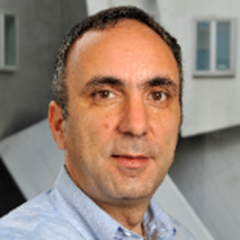
Dara Entekhabi
SMAP Science Definition Team Lead
Dara Entekhabi is the SMAP Science Team Lead. He is also Bacardi and Stockholm Water Foundations Professor in the Ralph M. Parsons Laboratory, Department of Civil and Environmental Engineering, at ... moreDara Entekhabi is the SMAP Science Team Lead. He is also Bacardi and Stockholm Water Foundations Professor in the Ralph M. Parsons Laboratory, Department of Civil and Environmental Engineering, at the Massachusetts Institute of Technology (MIT). His areas of research interest are Earth remote sensing, linkages between climate and the water cycle, land-atmosphere interaction, and groundwater-surface water interaction. Professor Entekhabi is a fellow of the American Meteorological Society, the American Geophysical Union and the Institute of Electrical and Electronics Engineers. He is a member of the National Academy of Engineering. Professor Entekhabi is the Science Team Leader of the NASA Soil Moisture Active Passive (SMAP) satellite mission.
less -
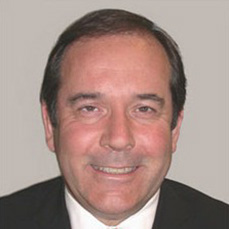
Robert Gurney
Robert Gurney is Professor of Earth Observation Science in the School of Maths, Meteorology and Physics at the University of Reading in the UK. He is also Director of the Environmental Systems Scie... moreRobert Gurney is Professor of Earth Observation Science in the School of Maths, Meteorology and Physics at the University of Reading in the UK. He is also Director of the Environmental Systems Science Centre, and one of the Heads of the Department of Meteorology within the School. He is interested in land-atmosphere interactions and the use of Earth Observation to improve our knowledge of how processes at the land surface scale in time and space. He is also interested in using novel cloud computing for organising observations and model output and allowing these to be compared and visualised. He has been a member of numerous science advisory bodies. Before coming to Reading in 1990, he was Head of the NASA GSFC Hydrological Sciences Branch. In the spirit of scientific collaboration, SMAP International science team members are funded through their respective countries for their work on this project. less -
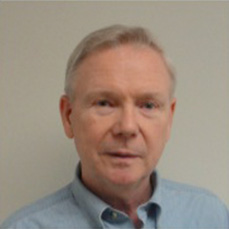
Tom Jackson
Thomas J. Jackson is a member of the SMAP Science Definition Team. He is the science team lead for Calibration and Validation and also contributes to the radiometer soil moisture algorithm. He is a... moreThomas J. Jackson is a member of the SMAP Science Definition Team. He is the science team lead for Calibration and Validation and also contributes to the radiometer soil moisture algorithm. He is a research hydrologist with the U. S. Department of Agriculture, Agricultural Research Service, Hydrology and Remote Sensing Lab. He received a Ph.D. degree from the University of Maryland in Civil Engineering in 1976 and joined ARS in 1977. His research involves the application and development of remote sensing technology in hydrology and agriculture, primarily microwave measurement of soil moisture. He is or has been a member of the science and validation teams of numerous satellite missions including Aqua, ADEOS-II, ALOS, SMOS, and Aquarius. He is a Fellow of the IEEE, the American Meteorological Society and the American Geophysical Union. In 2003 he received the William T. Pecora Award (NASA and Dept. of Interior) for outstanding contributions toward understanding the Earth by means of remote sensing. less -
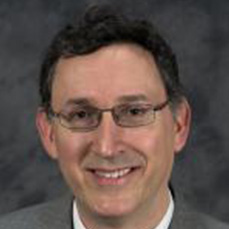
Joel Johnson
Joel T. Johnson received the bachelor of electrical engineering degree from the Georgia Institute of Technology in 1991 and the S.M. and Ph.D. degrees from the Massachusetts Institute of Technology... moreJoel T. Johnson received the bachelor of electrical engineering degree from the Georgia Institute of Technology in 1991 and the S.M. and Ph.D. degrees from the Massachusetts Institute of Technology in 1993 and 1996, respectively. He is currently a Professor in the Department of Electrical and Computer Engineering and ElectroScience Laboratory of The Ohio State University. Dr. Johnson has been active in microwave sensing research since 1990, and has led programs on physics-based modeling of microwave sensor responses and the development of new sensor technologies. He is co-author of over 70 peer-reviewed journal articles/book chapters and over 130 conference papers. Dr. Johnson is an IEEE Fellow, a member of commissions B and F of the International Union of Radio Science (URSI), and a member of Tau Beta Pi, Eta Kappa Nu, and Phi Kappa Phi. He received the 1993 best paper award from the IEEE Geoscience and Remote Sensing Society, was named an Office of Naval Research Young Investigator, National Science Foundation Career awardee, and PECASE award recipient in 1997, and was recognized by the U. S. National Committee of URSI as a Booker Fellow in 2002. He has served as an Associate Editor of the IEEE Transactions on Geoscience and Remote Sensing since 2000, on the editorial board of Waves in Random in Complex Media, and as the chair of the IEEE Geoscience and Remote Sensing Society’s Frequency Allocation for Remote Sensing technical committee (2005-2009). less -
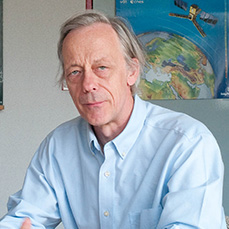
Yann Kerr
Dr. Yann Kerr is currently Director of CESBIO, principal investigator (PI) of the SMOS mission, and an international member of the SMAP science Definition Team. He received his Ph.D from the Univer... moreDr. Yann Kerr is currently Director of CESBIO, principal investigator (PI) of the SMOS mission, and an international member of the SMAP science Definition Team. He received his Ph.D from the Université Paul Sabatier in 1992. His research fields of interest are in the theory and techniques for microwave and thermal infrared remote sensing of the Earth, with emphasis on hydrology, water resources management and vegetation monitoring . He was an EOS principal investigator (interdisciplinary investigations), and PI and precursor of the use of the SCAT over land. In 1990, he started to work on the interferometric concept applied to passive microwave earth observation, and was subsequently the science lead on the MIRAS project for ESA with MMS and OMP. He was also a Co-investigator on IRIS, OSIRIS and HYDROS for NASA. He was a science advisor for MIMR and Co I on AMSR.
In 1997, he first proposed the natural outcome of the previous MIRAS work with what was to become the SMOS Mission, which was eventually selected by ESA in 1999 with him as the SMOS mission Lead-Investigator and Chair of the Science Advisory Group. Kerr is also in charge of the SMOS science activities coordination in France and organized all the SMOS Science workshops. In the spirit of scientific collaboration, SMAP International science team members are funded through their respective countries for their work on this project.
less -
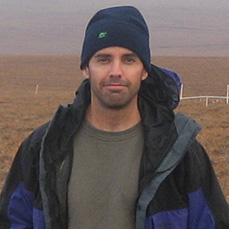
John Kimball
John Kimball is a member of the SMAP Science Definition Team (SDT) advising on freeze-thaw and carbon cycle science and associated algorithm development, calibration & validation, and product a... moreJohn Kimball is a member of the SMAP Science Definition Team (SDT) advising on freeze-thaw and carbon cycle science and associated algorithm development, calibration & validation, and product applications. He is an Associate Professor of Biological Sciences at the University of Montana, where he’s been a faculty member of the Flathead Lake Biological Station since 1999. He received the B.A. and M.A. degrees in Physical Geography from San Diego State University in 1987 and 1990, and the Ph.D. degree in Bioresource Engineering and Geosciences from Oregon State University in 1995. His expertise and research interests involve remote sensing ecology and the measurement and monitoring of global carbon and water cycles through synergistic use of biophysical process models and satellite remote sensing. Dr. Kimball is a member of the NASA EOS MODIS and AMSR-E science teams and is on the editorial board of the Canadian Journal of Remote Sensing. He is an avid swimmer, hiker and kayaker and enjoys the wilds of NW Montana with his family. less -
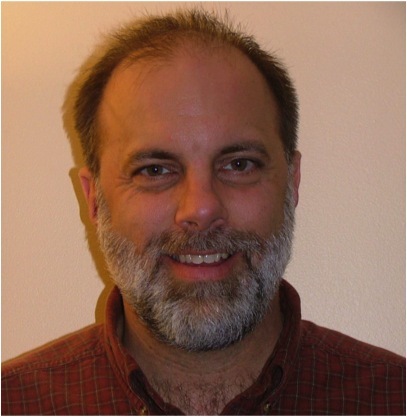
Randy Koster
Dr. Koster studies the global hydrological cycle using coupled Earth system models, with a focus on applying soil moisture information to the improvement of precipitation, air temperature, and stre... moreDr. Koster studies the global hydrological cycle using coupled Earth system models, with a focus on applying soil moisture information to the improvement of precipitation, air temperature, and streamflow forecasts at subseasonal to seasonal timescales. He obtained a Bachelor of Science degree from the California Institute of Technology in 1982 and a Masters and Doctor of Science degrees in Civil Engineering (hydrology) from the Massachusetts Institute of Technology in 1985 and 1988, respectively. He joined NASA/GSFC in 1987 and now works in GSFC's Global Modeling and Assimilation Office, where he leads the development and maintenance of numerical code for simulating land surface processes and their interactions with the climate system. He is a fellow of the American Meteorological Society. less -
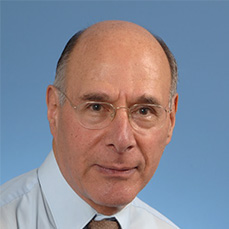
David Le Vine
Dr. David Le Vine is a member of Earth Sciences Division at NASA’s Goddard Space Flight Center where his work has focused on passive microwave remote sensing with application to such parameters as ... moreDr. David Le Vine is a member of Earth Sciences Division at NASA’s Goddard Space Flight Center where his work has focused on passive microwave remote sensing with application to such parameters as soil moisture and ocean salinity. He is Deputy Principal Investigator for NASA’s Aquarius mission, the NASA Earth System Science Pathfinder mission launched in June 2011 to measure sea surface salinity. He is also a member of the Quality Working Group for ESA’s Soil Moisture and Ocean Salinity (SMOS) mission. Among his achievements is development of microwave remote sensing of the Earth using interferometry. An example of this work is development of the synthetic aperture radiometer, ESTAR, and its successor, 2D-STAR. Dr. Le Vine’s background is electrical engineering with specialization in electromagnetic theory and physics. He earned the Ph-D in electrical engineering and MS in physics from the University of Michigan. He has contributed to scattering from rough surfaces, propagation through random media, and radiation from lightning. Dr. Le Vine is a fellow of the IEEE and a member of the Geoscience and Remote Sensing Society (GRSS). He is also a member of the International Union of Radio Science and the American Geophysical Union. less -
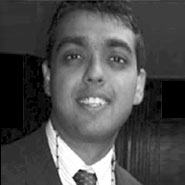
Sidharth Misra
Sidharth Misra received a B.E. degree in Electronics and Communication from the Nirma Institute of Technology, Gujarat University, India in 2004 and a M.S. in Electrical Engineering and Computer Sc... moreSidharth Misra received a B.E. degree in Electronics and Communication from the Nirma Institute of Technology, Gujarat University, India in 2004 and a M.S. in Electrical Engineering and Computer Science from the University of Michigan in 2006. He received a Ph.D. in Atmospheric and Space Sciences in 2011, also from the University of Michigan. He has been a research associate at the Technical University of Denmark, and is currently a research engineer in the Microwave Systems Technology Group at the NASA Jet Propulsion Laboratory in Pasadena, CA. He has been active in the fields of microwave radiometer calibration and the development and assessment of radio frequency interference algorithms. He was involved with the detection algorithm development for the Aquarius mission as well as the development of the detection algorithm currently adopted and modified by the SMAP mission. He is currently involved with the development of post-launch calibration algorithms for Aquarius. He is also the instrument scientist for the JPL RACE (Radiometer Atmospheric CubeSat Experiment) mission. He received the IGARSS Symposium Paper award in 2006 and the Mikio Takagi Student Paper award in 2009. He also has received the Best Reviewer award for the IEEE Transactions in Geoscience and Remote Sensing for 2012. He is the current chair of the IEEE Geoscience and Remote Sensing Society (GRSS) Frequency Allocations in Remote Sensing (FARS) Technical Committee. less -
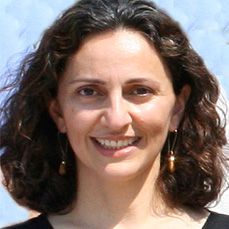
Mahta Moghaddam
Mahta Moghaddam received the B.S. degree (with highest distinction) from the University of Kansas, Lawrence, in 1986 and the M.S. and Ph.D. degrees from the University of Illinois, Urbana-Champaign... moreMahta Moghaddam received the B.S. degree (with highest distinction) from the University of Kansas, Lawrence, in 1986 and the M.S. and Ph.D. degrees from the University of Illinois, Urbana-Champaign, in 1989 and 1991, respectively, all in electrical and computer engineering. From 1991 to 2003, she was with the Radar Science and Engineering Section, Jet Propulsion Laboratory (JPL), California Institute of Technology, Pasadena, before joining the Radiation Laboratory in the EECS department at Michigan.
Dr. Moghaddam's research group is engaged in a variety of research topics related to applied electromagnetics, including the development of advanced radar systems for subsurface characterization, mixed-mode high resolution medical imaging techniques, and smart sensor webs for remote sensing data collection and validation. She has been the Principal and Coinvestigator on numerous research projects, and has authored or coauthored over 130 publications. She is a Fellow of IEEE and a member of URSI Commission B.
less -
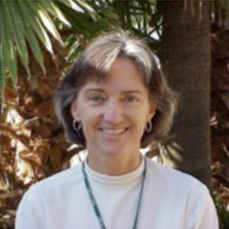
Susan Moran
Susan Moran is a member of the SMAP Science Definition Team and Chair of the SMAP Applications Working Group. She received her PhD in Soil and Water Science from University of Arizona (1990) and is... moreSusan Moran is a member of the SMAP Science Definition Team and Chair of the SMAP Applications Working Group. She received her PhD in Soil and Water Science from University of Arizona (1990) and is a Hydrologist at the USDA ARS Southwest Watershed Research Center in Tucson, Arizona. She also holds an adjunct faculty appointment with the Department of Soil, Water and Environmental Science at University of Arizona. Her research is concentrated on critical arid and semiarid regions with a broad focus on the impact of global change on natural resources management and a specialized focus on the application of remote sensing to understanding hydrologic processes. Dr. Moran has also served on the NASA Landsat Science Team and EO-1 Validation Team to evaluate selected technologies for meeting soil and plant science needs in the 21st Century. She is a Fellow of the ASA and AAAS, and was honored as Outstanding Senior Research Scientist of the Year by USDA ARS in 2002. less -
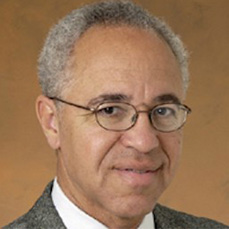
Eni Njoku
Project Science Staff
Eni Njoku is the SMAP project scientist. He is responsible for science aspects of the SMAP mission and for interfacing with the external SMAP Science Definition Team and scientific community. He re... moreEni Njoku is the SMAP project scientist. He is responsible for science aspects of the SMAP mission and for interfacing with the external SMAP Science Definition Team and scientific community. He received the B.A. degree in natural/electrical sciences from the University of Cambridge, U.K., in 1972 and the M.S. and Ph.D. degrees in electrical engineering from MIT in 1974 and 1976, respectively. He has been with JPL since 1977 where he is currently a senior research scientist and also supervisor of the Water and Carbon Cycles Group. He was manager of the Geology and Planetology Section at JPL from 1993 to 1994, and from 1986 to 1990 he served as discipline scientist for ocean and earth science data systems at NASA/Hq, Washington DC. His primary research interests are in developing microwave remote sensing techniques for land surface hydrology and climate. Current research includes microwave modeling, retrieval algorithm development, field experiments and data analysis using radiometers and radars. In addition to his SMAP activities he is a science team member of the EOS/AMSR-E instrument and is on the editorial board of the journal Remote Sensing of Environment. He is a Fellow of the IEEE, and was awarded the NASA Exceptional Service Medal in 1985. less -
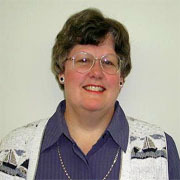
Peggy O'Neill
Deputy Project Scientist
Peggy E. O’Neill received her B.S. degree summa cum laude with University Honors in geography from Northern Illinois University in 1976, her M.A. degree in geography from the University of Californ... morePeggy E. O’Neill received her B.S. degree summa cum laude with University Honors in geography from Northern Illinois University in 1976, her M.A. degree in geography from the University of California at Santa Barbara in 1979, and has done post-graduate work in civil and environmental engineering through Cornell University. Since 1980 she has been employed as a Physical Scientist in the Hydrological Sciences Branch at NASA / Goddard Space Flight Center in Greenbelt, MD where she conducts research in soil moisture retrieval and land surface hydrology, primarily through microwave remote sensing techniques. She is currently the SMAP Deputy Project Scientist. less -
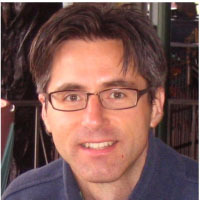
Rolf Reichle
Rolf Reichle is a member of the SMAP Science Definition Team and leads the development of the SMAP Level 4 Surface and Root-zone Soil Moisture product. Dr. Reichle received a Ph.D. in Environmental... moreRolf Reichle is a member of the SMAP Science Definition Team and leads the development of the SMAP Level 4 Surface and Root-zone Soil Moisture product. Dr. Reichle received a Ph.D. in Environmental Engineering (2000) from MIT, Cambridge, MA, and a MS in Physics (1996) and a BS in Mathematics (1992) from the University of Heidelberg, Germany. His Ph.D. thesis is on the optimal assimilation of remote sensing data for land surface hydrology applications. In 2001 he joined the Goddard Earth Sciences and Technology (GEST) Center at the University of Maryland, Baltimore County, as a member of the research faculty and began working in close collaboration with researchers at the NASA Goddard Space Flight Center (GSFC). From 2005 to 2007, Dr. Reichle served as Faculty Group Leader for the GEST Hydrological Sciences faculty group. In 2008 Dr. Reichle joined the NASA Global Modeling and Assimilation Office at GSFC where continues to work on land data assimilation. His main research interests are land data assimilation development and the application of land data assimilation to weather and seasonal climate forecasting. In addition to his SMAP activities he is a science team member of the EOS/AMSR-E instrument. Dr. Reichle’s publications include papers on global soil moisture data, land data assimilation, seasonal climate predictability, and groundwater contaminant transport. less -
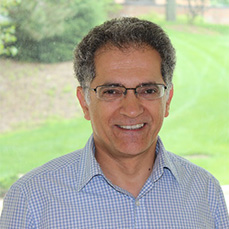
Kamal Sarabandi
Kamal Sarabandi (S’87- M’90- SM’92- F’00) received the B.S. degree in EE from Sharif University of Technology in 1980. He received the M.S. degree in EE (1986) and the M.S. degree in Mathematics an... moreKamal Sarabandi (S’87- M’90- SM’92- F’00) received the B.S. degree in EE from Sharif University of Technology in 1980. He received the M.S. degree in EE (1986) and the M.S. degree in Mathematics and the Ph.D. degree in electrical engineering from The University of Michigan, Ann Arbor, in 1989. He is the Rufus S. Teesdale professor of Engineering and Director of the Radiation Laboratory in the Department of Electrical Engineering and Computer Science at the University of Michigan. His research areas of interest include microwave and millimeter-wave radar remote sensing, Meta-materials, electromagnetic wave propagation, and antenna miniaturization. He has 22 years of experience with wave propagation in random media, communication channel modeling, microwave sensors, and radar systems and is leading a large research group including two research scientists, 12 Ph.D. and 2 M.S. students. He has graduated 31 Ph.D. and supervised numerous postdoctoral students. He has served as the Principal Investigator on many projects sponsored by NASA, JPL, ARO, ONR, ARL, NSF, DARPA and a larger number of industries. Dr. Sarabandi has published many book chapters and more than 170 papers in refereed journals on miniaturized and on-chip antennas, meta-materials, electromagnetic scattering, wireless channel modeling, random media modeling, microwave measurement techniques, radar calibration, inverse scattering problems, and microwave sensors. He has also had more than 420 papers and invited presentations in many national and international conferences and symposia on similar subjects. Dr. Sarabandi is a member of NASA Advisory Council appointed by the NASA Administrator. He also served as a vice president of the IEEE Geoscience and Remote Sensing Society (GRSS) and a member of the IEEE Technical Activities Board Awards Committee. He is serving on the Editorial Board of The IEEE Proceedings, and served as Associate Editor of the IEEE Transactions on Antennas and Propagation and the IEEE Sensors Journal. Professor Sarabandi is a member of Commissions F and D of URSI and is listed in American Men & Women of Science Who's Who in America and Who’s Who in Science and Engineering. Dr. Sarabandi was the recipient of the Henry Russel Award from the Regent of The University of Michigan. In 1999 he received a GAAC Distinguished Lecturer Award from the German Federal Ministry for Education, Science, and Technology. He was also a recipient of the 1996 EECS Department Teaching Excellence Award and a 2004 College of Engineering Research Excellence Award. In 2005 he received the IEEE GRSS Distinguished Achievement Award and the University of Michigan Faculty Recognition Award. He also received the best paper Award at the 2006 Army Science Conference. In 2008 he was awarded a Humboldt Research Award from The Alexander von Humboldt Foundation of Germany. In the past several years, joint papers presented by his students at a number of international symposia (IEEE APS’95,’97,’00,’01,’03,’05,’06,’07; IEEE IGARSS’99,’02,’07; IEEE IMS’01, USNC URSI’04,’05,’06, AMTA ’06, URSI GA 2008) have received student paper awards. less -
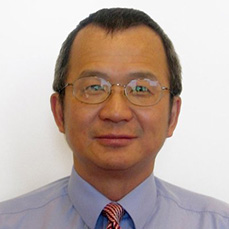
Leung Tsang
Leung Tsang received the SB degree in 1971, the SM, EE degrees in 1973 and the Ph.D. degree in 1976, all from the Massachusetts Institute of Technology. He has been a Professor of Electrical Engine... moreLeung Tsang received the SB degree in 1971, the SM, EE degrees in 1973 and the Ph.D. degree in 1976, all from the Massachusetts Institute of Technology. He has been a Professor of Electrical Engineering at the University of Washington since 1986. He was the President of IEEE Geoscience and Remote Sensing Society for the 2-year term 2006-2007. Since April 2008, he has been the President of the Electromagnetics Academy. Between 2001-2004, he was on leave from University of Washington and was with the Department of Electronic Engineering of the City University of Hong Kong. His current research interests are in remote sensing, wave scattering and propagation in random media, high frequency interconnects, and computational electromagnetics. less -
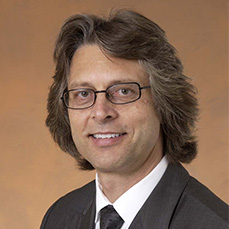
Jakob van Zyl
Dr. Jakob van Zyl is JPL's Director for Solar System Exploration at the Jet Propulsion Laboratory and a member of the SMAP science definition team. Van Zyl received an honors bachelor's degree cum ... moreDr. Jakob van Zyl is JPL's Director for Solar System Exploration at the Jet Propulsion Laboratory and a member of the SMAP science definition team. Van Zyl received an honors bachelor's degree cum laude in electronics engineering from the University of Stellenbosch, Stellenbosch, South Africa. He received both his master's and his Ph.D. in electrical engineering from Caltech. Van Zyl joined the Laboratory in 1986 and held positions of increasing responsibility in the synthetic aperture radar program. In addition, he managed the Radar Science and Engineering Section, the Earth Science Flight Missions and Experiments Office, and the Focused Physical Oceanography and Solid Earth Program Office. He was appointed deputy director for the Astronomy and Physics Directorate in 2002. He has been an adjunct faculty member in the Mechanical and Aerospace Engineering Department, University of Southern California, where he taught the class "Remote Sensing Systems from Space" from 1997 to 2001. Since 2002 he has been teaching the class "Physics and Techniques of Remote Sensing" at Caltech.
less -
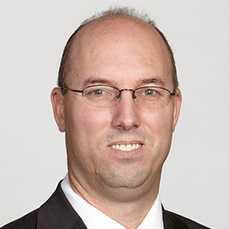
Jeffrey Walker
Jeff Walker is an international member of the SMAP Science Definition Team, contributing to Calibration and Validation activities and the Surface and Root-zone Soil Moisture Products. Professor Wal... moreJeff Walker is an international member of the SMAP Science Definition Team, contributing to Calibration and Validation activities and the Surface and Root-zone Soil Moisture Products. Professor Walker received his B.E. (Civil) and B.Surveying degrees in 1995 with Hons 1 and University Medal from the University of Newcastle, Australia, and his Ph.D. in Water Resources Engineering from the same University in 1999. His Ph.D. thesis was among the early pioneering research on the estimation of root-zone soil moisture from assimilation of remotely sensed surface soil moisture observations. Following his Ph.D. Professor Walker joined the NASA Seasonal-to-Interannual Predicton Project at NASA Goddard Space Flight Centre to implement his soil moisture assimilation work globally. During this time he also made contributions to development of the first global satellite soil moisture product, which has proved to be one of the most accurate algorithms for C-band soil moisture retrieval to date. In 2001 he moved to the Department of Civil and Environmental Engineering at Melbourne University as Lecturer, where he continued his data assimilation work and developed an airborne capability for simulating the types of data to be available from SMAP. In 2010 he was appointed as Professor in the Department of Civil Engineering at Monash University where he is continuing this research. Professor Walker was recently awarded the Australian Academy of Sciences Anton Hales Medal in Earth Sciences for his research contributions in soil moisture monitoring and prediction.
In the spirit of scientific collaboration, SMAP International science team members are funded through their respective countries for their work on this project.
less -
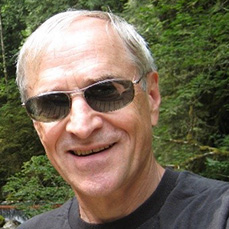
Eric F. Wood
Eric F. Wood holds the Susan Dod Brown Professorship in Civil and Environmental Engineering at Princeton University, where he has taught since 1976. His research area is in hydroclimatology with ... moreEric F. Wood holds the Susan Dod Brown Professorship in Civil and Environmental Engineering at Princeton University, where he has taught since 1976. His research area is in hydroclimatology with an emphasis on the modeling and analysis of the global water and energy cycles through land surface modeling; satellite remote sensing of precipitation, soil moisture and evapotranspiration; and data analysis. Application areas include the monitoring and forecasting of drought, hydrologic impacts from climate change, and seasonal hydrological forecasting. Among his honors, Dr. Wood received a Doctor Honoris Causa from Gent University (Belgium) in 2011, the 2014 Creativity Award of Prince Sultan Bin Abdulaziz International Prize for Water, European Geosciences Union’s Alfred Wegener Medal and John Dalton Medal, AMS’s Jules G. Charney Award and Robert E. Horton Memorial Lectureship, and AGU's Hydrology Section’s Robert E. Horton Award. He is a Foreign Fellow of the Australian Academy of Technological Sciences and Engineering (ATSE), a Fellow of the Royal Society of Canada, the American Geophysical Union and the American Meteorological Society. less -
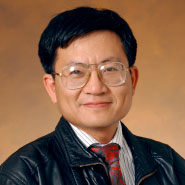
Simon Yueh
Project Scientist
Simon H. Yueh received the Ph.D. degree in Electrical Engineering in January 1991 from the Massachusetts Institute of Technology. He was a postdoctoral research associate at the Massachusetts Insti... moreSimon H. Yueh received the Ph.D. degree in Electrical Engineering in January 1991 from the Massachusetts Institute of Technology. He was a postdoctoral research associate at the Massachusetts Institute of Technology from February to August 1991. In September 1991, he joined the Radar Science and Engineering Section at the Jet Propulsion Laboratory (JPL). He was the supervisor of radar system engineering and algorithm development group from 2002-2007. He was the deputy manager of Climate, Oceans and Solid Earth section from 2007 to 2009, and the section manager from 2009 to 2013. He served as the Project Scientist of the National Aeronautics and Space Administration (NASA) Aquarius mission from January 2012 to September 2013, the Deputy Project Scientist of NASA Soil Moisture Active Passive Mission from Jan 2013 to September 2013, and the SMAP Project Scientist since October 2013. He has been the Principal/Co-Investigator of numerous NASA and DOD research projects on remote sensing of soil moisture, terrestrial snow, ocean salinity and ocean wind. He has authored four book chapters and published more than 150 publications and presentations. He received the IEEE GRSS Transaction Prize Paper award in 1995, 2002, 2010 and 2014. He also received the 2000 Best Paper Award in the IEEE International Geoscience and Remote Symposium. He received the JPL Lew Allen Award in 1998 and Ed Stone Award in 2003. He receives the NASA Exceptional Technology Achievement Medal in 2014. He is an associate editor of IEEE Transactions on Geoscience and Remote Sensing and is the Fellow of IEEE. less
Teams




